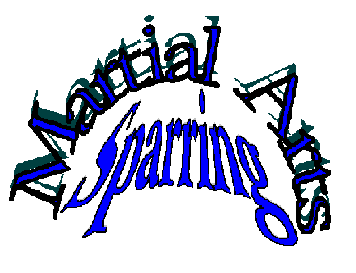


This is an exerpt from the book Volume 2 of Theories and Aspects of the Martial Art the author is presently working on. Do not reprint, electronically send out or put out without the authors permision. To see an exerpt of the authors new book click on Book Descriptionmhusband@adams.net
a. Upper Body
i. How to make a fist.
ii. Hip action
(1) Starting position 45°.
(2) Ending Position 90°.
iii. Elbow scrapes side of the body.
iv. Two types of punches.
(1) Last second twist.
(2) Corkscrew punch.
v. Focus center of Triangle.
vi. Lead hand comes back quickly to the hip.
vii. Shoulder and Armpit control.
b. Lower Body
i. Feet shoulder width apart.
ii. Front foot pigeon toed in.
iii. Rear foot is pointing forward as much as possible.
iv. Rear heel is driving foot into ground.
c. Starting Position
i. Rear leg is slightly bent.
ii. Hips and shoulders at 45°.
iii. Buttocks and stomach slightly tense.
iv. Front knee is over the base of the front big toe.
d. Ending Position
i. Rear leg is straight with no hyper- extension.
ii. Hips are at 180°.
iii. Knee is even with the edge of the big toe.
e. Mental Objectives
i. Relaxation on the inhale.
ii. Contraction on the exhale.
iii. Zanchin
(1) Follow through.
iv. Kime
(1) Mind focus
(2) Center of the body focus
(3) Weapon
a. Stay relaxed in a ready position before throwing a reverse punch. Relaxing will allow for better reaction times.
b. The forearm should rest slightly against the abdomen to the rear with the palm of the fist facing up. This leaves the punch more forward and allows less distance for the punch to cover.
c. Do not torque the hips back in a demonstrative action. This will telegraph and slow down the reaction time as well as waste motion. Instead have the hip already torqued back with the feeling of exploding forward. (This does not directly include feints or preparatory attacks which will allow or need the quick action of torquing with the hips.)
d. Start the punch for the heel of the rear foot. This action thrust the body into motion, thereby throwing the hips forward, and sending the punch towards the intended target.
e. Keep palm face up when launching the attack. At the point when the punch connects with the target, the fist should turn over at least a quarter to almost a half rotation. This rotation will allow for more torquing action with more penetrating power.
f. Use only the knuckle area of the index and middle finger to strike the target. This small area concentrates the power of the punch instead of spreading the energy over the full surface area of the fist.

g. Completely focus the punch one to three inches through the intended ttttarget. If the punch focusses to far past the target it starts to push it and causes a general loss of power.
h. Hips and shoulder action should be forward and lock at approximately 90° to the intended target. The punch itself will be coordinated near the center line of the attacking individual, with the arm extend at a 45° angle to the hips and shoulders.

b. Make sure you quickly retract your reverse punch hand to a ready position after the attack. This will discourage your opponent from grappling with your arm and prepares you for the possibility of have to attack (or punch) again.
c. After the completion of the punch, thrust back with the lead leg to get away form a possible counter attack.
d. The reverse punch does not have to be a fist on impact. In some cases the heel of palm is an excellent weapon for self defense.
4. Common Reverse Punch Errors
b. Torquing the body from the waist only. This allows for only the upper body to produce the power and force, thereby losing a tremendous amount of power from the lower body or total body action.
c. Front leg is not in a good phasic position. If the front knee is not situated and lock above the base of the big toe, it will leave the fighter (martial artist) open for a sweep techniques as well as bad balance.
d. Not tensing the stomach on the impact of the punch. This will not allow for a total body lock and can cause damage to your own internal organs if the opponent punched you in the abdomen at the same time.